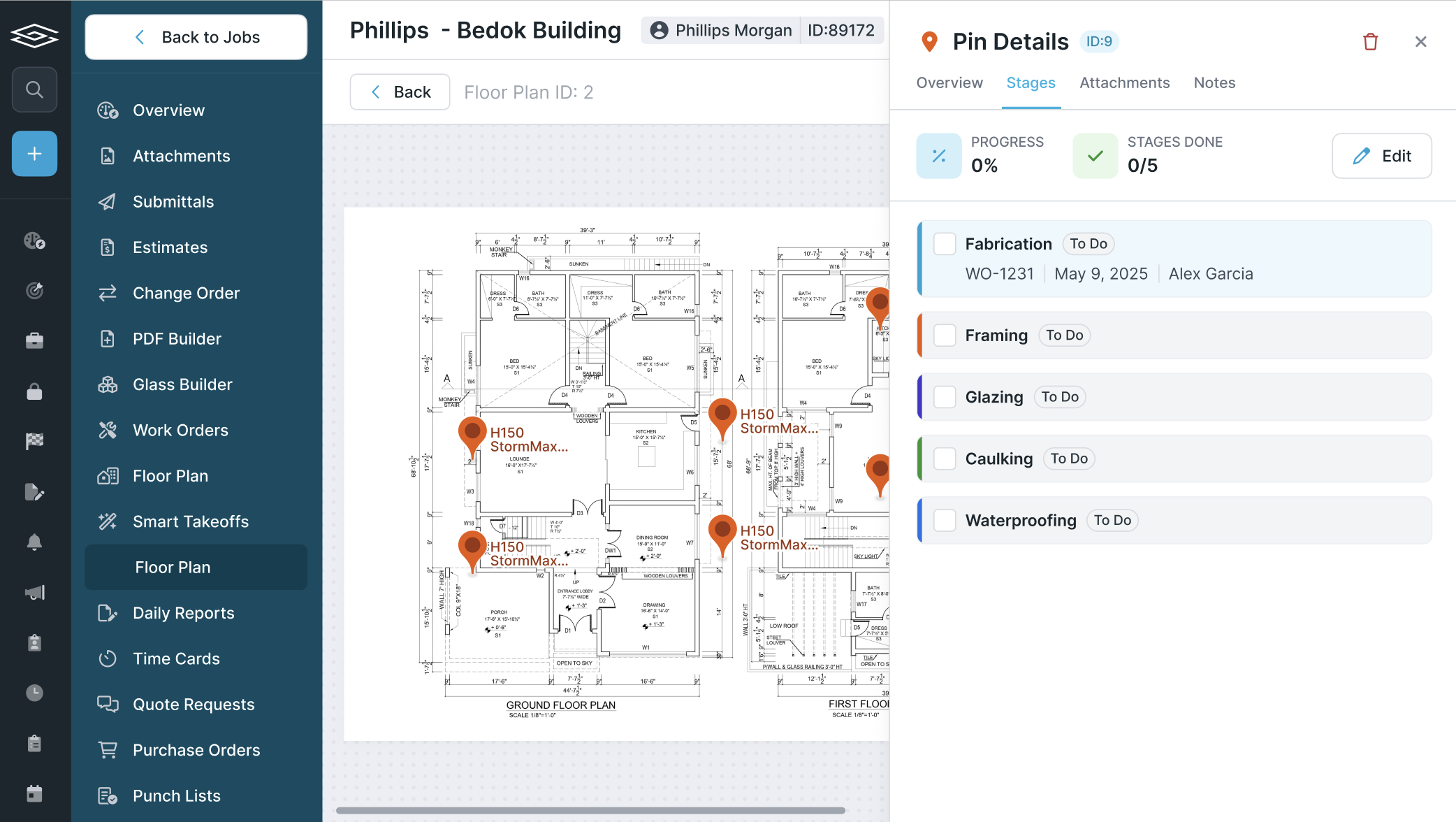Managing Hundreds of Openings Without Losing the Thread
If you’ve ever managed a large commercial glazing job - think casinos, hospitals, airports - you know the real challenge isn’t just getting the work done. It’s keeping track of what’s been done - and doing it fast enough to protect the schedule and the budget. Framed, but not glazed. Glazed, but with a defect. Delayed because the rough opening wasn’t ready. Then the crew gets pulled off the job for weeks. When they return, everyone’s asking the same question:
Where did we leave off?
Most of the time, the answer lives in a blend of daily reports, foreman - PM conversations, and a spreadsheet that only one person really understands. Every day without clarity can result in slipping behind schedule and thousands in lost profit.
Why This Breaks Down
- Information is scattered - field notes, emails, photos, and schedules aren’t in one place.
- Time decay - details fade when weeks pass between site visits.
- Reactive, not proactive - you find out you’re behind schedule when it’s already too late to recover without spending more.
The bigger the job, the bigger the financial risk from the gap between what should be happening and what’s actually happening.
A Different Approach: Plan-Centric Management
Imagine if the floor plan itself became the system of record. Every opening tagged. Every tag clickable. One click shows you the status, photos, notes, shop drawings, and even the rough opening dimensions. Color coding makes it instantly clear: orange for framed, purple for glazed, gray for pending. The plan becomes a living, breathing progress map—not just a static drawing. Field crews can pull up plans in the field on ipads and click the openings they're working on to check off status, take photos, and report delays.
Jason Sproul of Avanti Glass & Mirror, who works on major casino projects, described this style of tracking as"magic".
How does this work in Glazier?
Step 1: Configure every system you're installing with custom stages & progress % indicators.
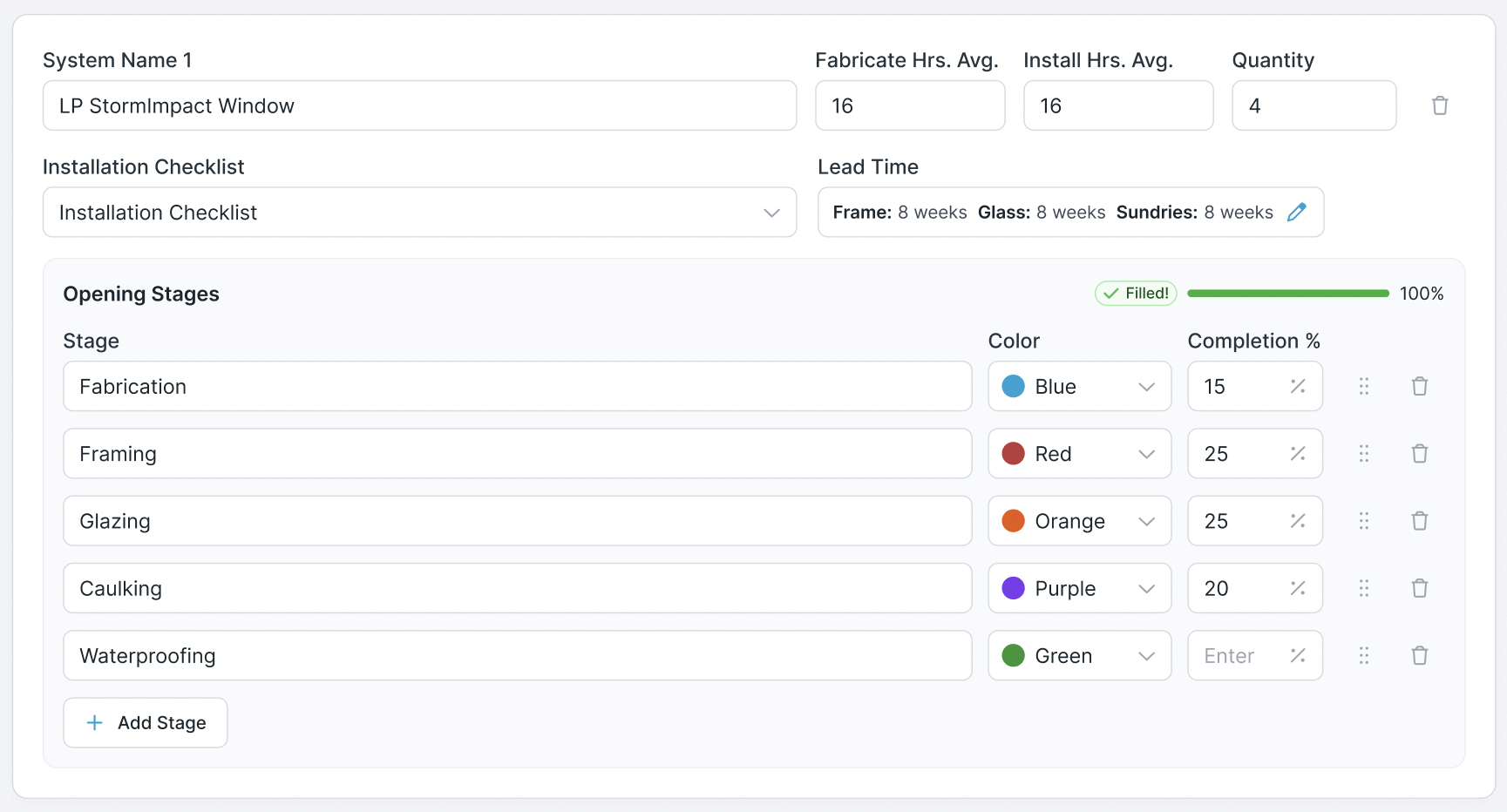
Step 2: Drag and drop your systems onto the floor plan.
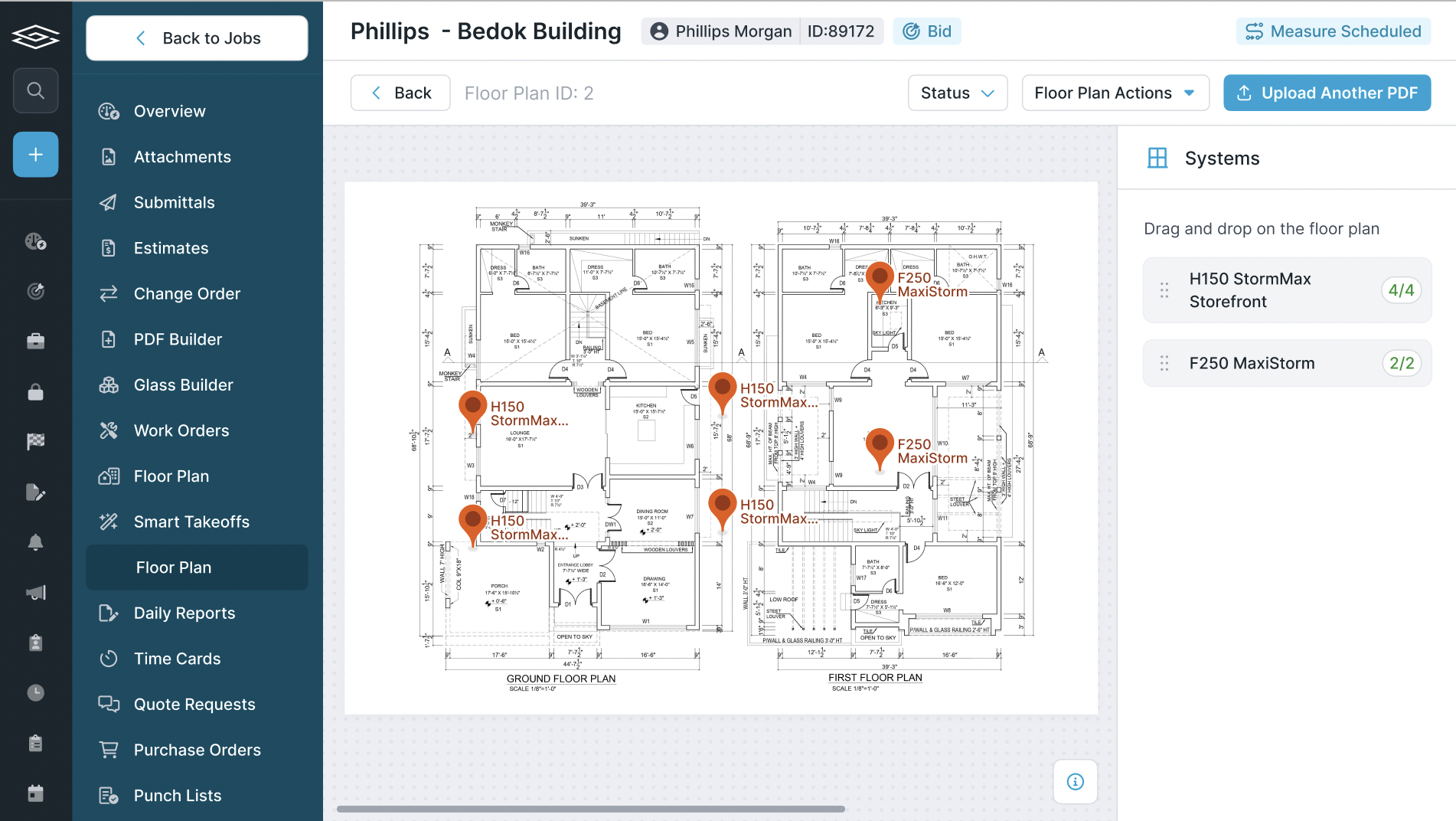
Each "pin" becomes an interactive status tracker & opening management system complete with rough opening dimensions, shop drawings & attachments specific to that opening, notes and more.

Step 4: Assign "pins" to work orders so technicians in the field know exactly which openings they're working on and can click to open details by opening in the field.
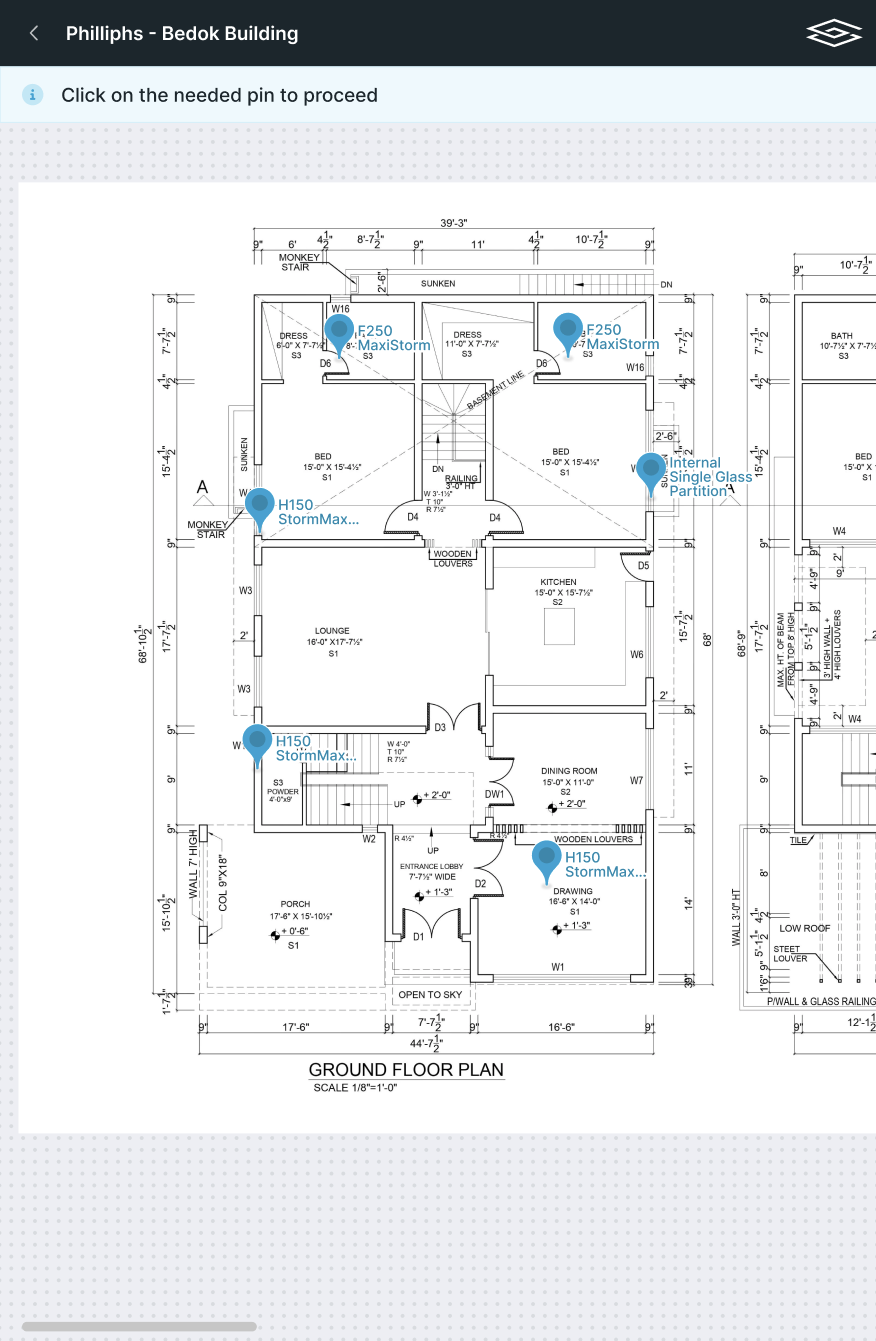
Step 5: Unlock reporting insights - how are we tracking by opening type? What is slower than estimated? Where are we starting to lose money? All of this information updates in realtime as techs complete opening checklists in the field.
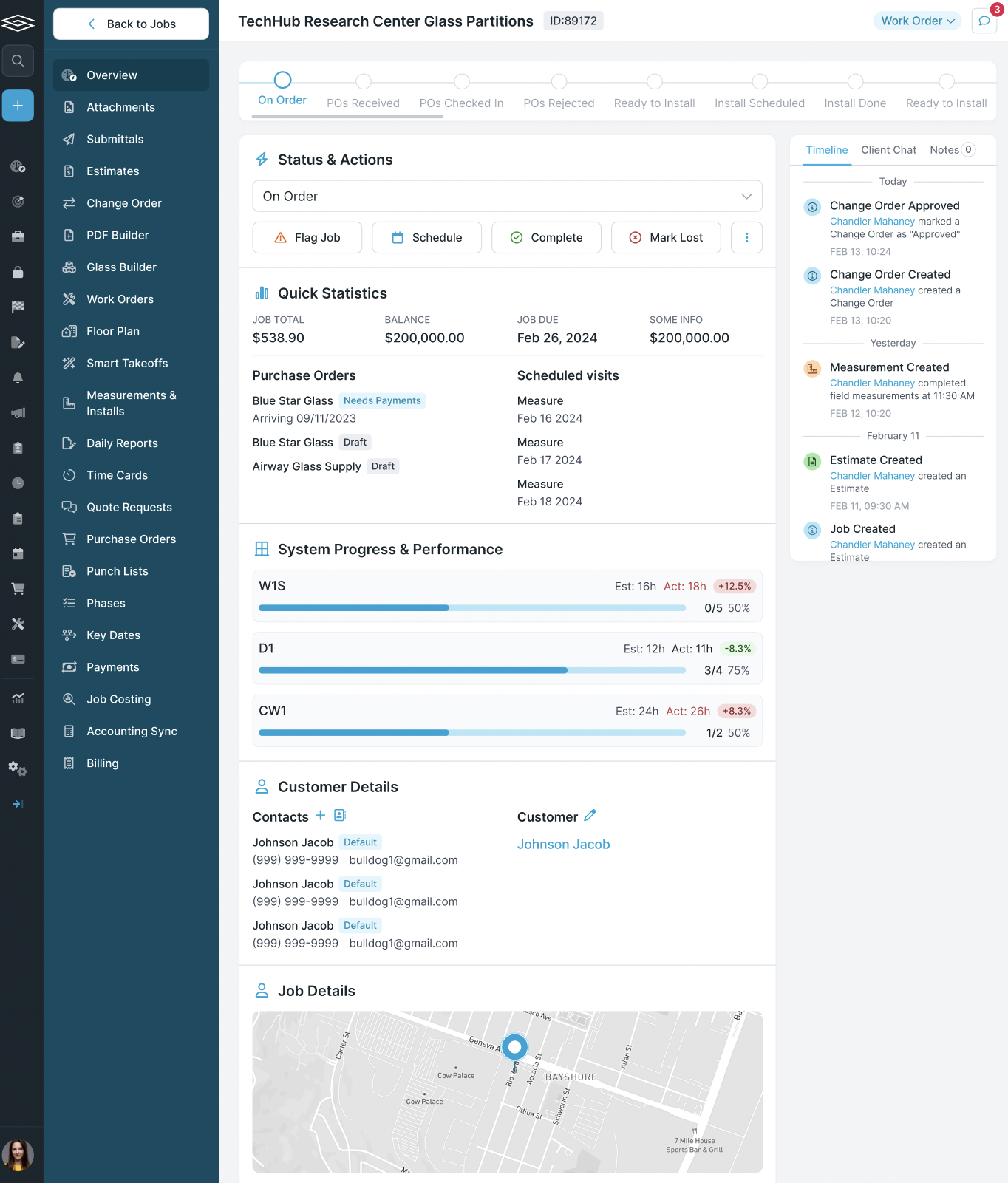
Where This is Heading?
The next evolution is data that not only records what happened, but predicts when you’re falling behind - while there’s still time to prevent budget overruns.
- Integrated time tracking that flags when certain systems are taking longer than estimated.
- Gantt-style scheduling that plans work down to the opening level.
The goal isn’t just better recordkeeping - it’s to give PMs and owners the ability to stay ahead of schedule risk and protect margins before it’s too late. Large commercial glazing is complex enough without relying on memory, email chains, and siloed spreadsheets. Plan-centric project management isn’t about software - it’s about giving both field and office a shared, real-time truth about the job - so you can stay on time, on budget, and profitable.
